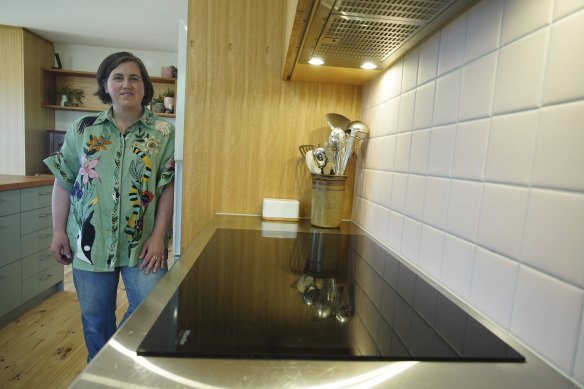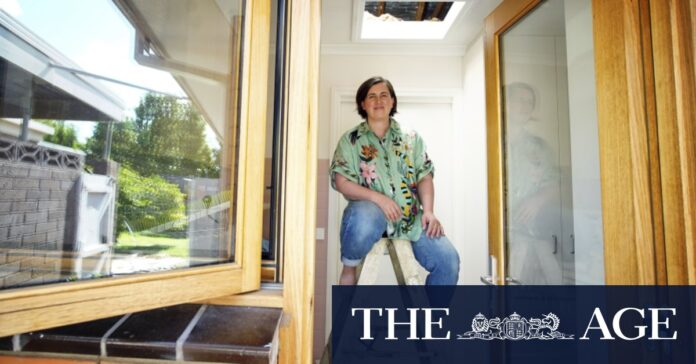[ad_1]
From there, Adams recommended installing or improving insulation, both in the ceiling or beneath the floor. “Putting insulation in the ceiling, if there was none there, would really make a significant difference,” he said.
Adams said even those who already had insulation might not be getting its full benefit if it were incorrectly installed or if the ceiling featured downlights.
“Lots of houses have recessed light fittings, with gaps around them because some lights were designed to have airflow past them to keep them cool,” he said.
Next was to draught-seal doors and windows to prevent cool or warm air from escaping, and adding heavy or sun-blocking curtains or blinds to keep the sun out and warmth in.
Geelong homeowner Sarah Anderson prioritised thermal efficiency in her recent renovation, which she said had improved both her comfort and the amount of money spent on keeping the house both warm and cool.
“As power prices go up and things get a bit crazier with the weather, we wanted to feel like our house was going to be comfortable.

Anderson also got rid of gas when renovating, which she said has saved her money on bills. Credit: Luis Ascui
“What happens when it’s 40 degrees and the power goes out? You’re going to bake in your house.”
Before committing to the full retrofit of her home, Anderson made the few improvements she could at the time. For her, it included adding solar, a new split system air-conditioner and shading western windows.
Loading
Anderson said others hoping to improve their homes’ thermal efficiency could do so for even cheaper.
“Do your ceiling insulation and underfloor insulation; they’re cheap to do, and they make a huge difference,” she said. “Shading your west windows can be cheap. Just buy a shade sail.”
Both Anderson and Adams recommend seeking professional help to triage the most important issues with the house, which the latter said could cost as little as $450.
New Energy Thinking’s Richard Keech helps run the Facebook group My Efficient Electric Home, where he provides advice to homeowners hoping to improve their homes’ thermal performance.
He said the safe room concept was emerging, and not a common topic of advice on the forum.
“[A safe room] would suit some people who have a limited budget,” he said.
“In some houses, doing the entire home would be really tricky. Fixing up a single room and putting a split system in there would help some people stay comfortable in a heatwave.”
Keech said that, despite an upfront cost, improving a home’s thermal efficiency typically paid off in the long run.
“You can be more comfortable and reduce your energy consumption by three-quarters and the rest of your energy consumption can be offset with solar,” he said.
“You’re looking at reducing energy cost by a conservative estimate of three-quarters. It’s not unreasonable for some people to have costs reduced by 80 to 90 per cent.”
[ad_2]
Source link


